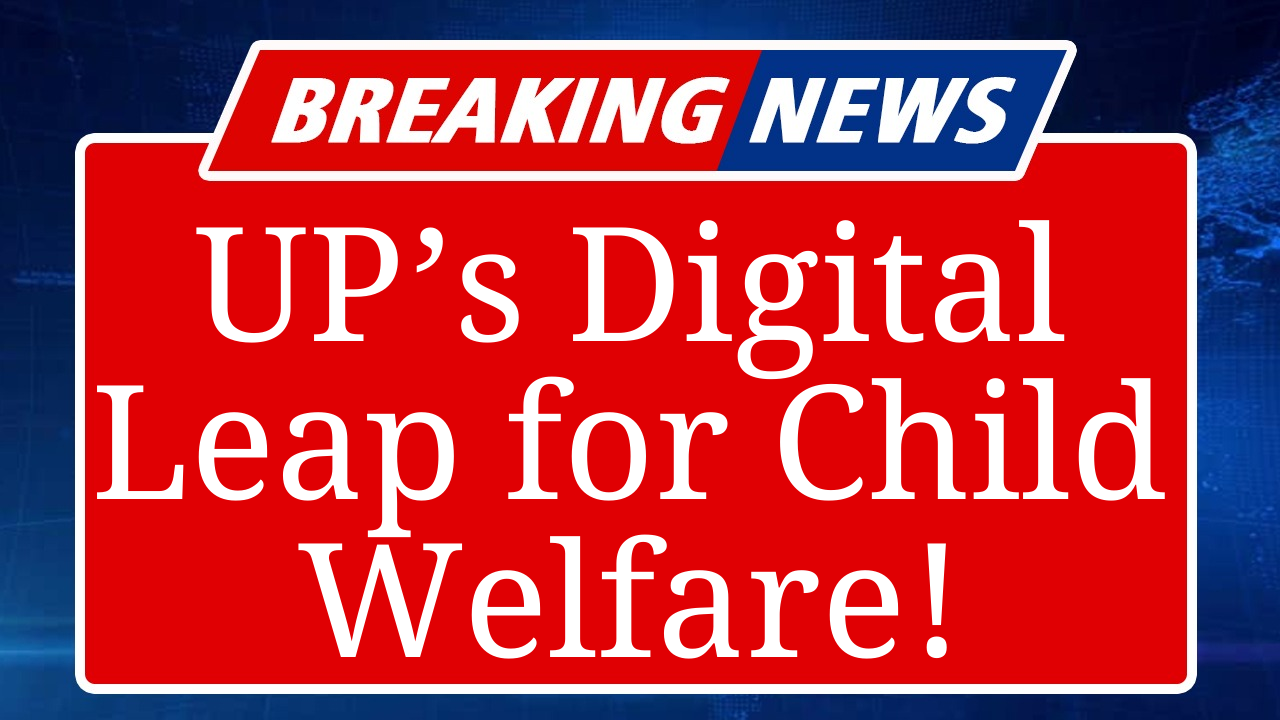“Uttar Pradesh’s Digital Anganwadi Tracking System revolutionizes child welfare by digitizing services, ensuring real-time monitoring of nutrition and health for millions of children. The Poshan Tracker app enhances transparency, streamlines data, and empowers workers, but challenges like connectivity and training persist. This initiative strengthens India’s fight against malnutrition.”
Uttar Pradesh Pioneers Digital Transformation in Child Welfare
Poshan Tracker: A Game-Changer
The Uttar Pradesh government has embraced technology to bolster its Integrated Child Development Services (ICDS) through the Poshan Tracker, a mobile-based application launched in 2021 under the Saksham Anganwadi and Poshan 2.0 initiative. This app enables Anganwadi workers to digitally record data on nutrition, health check-ups, and preschool activities for children aged 0–6 years, pregnant women, and lactating mothers. As of 2025, over 1.8 lakh Anganwadi centers in UP are integrated into this system, covering approximately 1.2 crore beneficiaries. Real-time data uploading ensures accurate tracking of growth metrics and nutritional interventions, addressing gaps in the traditional ledger-based system.
Enhancing Transparency and Accountability
The digital system promotes transparency by allowing supervisors and policymakers to monitor service delivery instantly. Anganwadi workers upload details of meals, immunization records, and attendance, which are accessible to Child Development Project Officers (CDPOs) via dashboards. This has reduced discrepancies in reporting and ensured timely interventions. For instance, the system flags undernourished children, enabling swift corrective measures like supplementary nutrition programs. In 2024, UP reported a 15% improvement in identifying malnourished children due to this technology.
Empowering Anganwadi Workers
Anganwadi workers, primarily women from rural areas, are at the heart of this transformation. The state has provided smartphones to over 1.5 lakh workers to facilitate data entry. Incentives of ₹500 for workers and ₹250 for helpers are offered for growth monitoring and home visits. However, the transition hasn’t been seamless—workers have faced challenges with the app’s English interface, limited phone memory, and inconsistent internet connectivity in rural areas.
Challenges in Implementation
Despite its promise, the system faces hurdles. Many Anganwadi workers, earning less than ₹20,000 monthly, struggle with the app’s usability due to language barriers and technical glitches. Rural areas with poor network coverage exacerbate delays in data uploads, risking salary or supply suspensions. Training programs are ongoing, but the pace of upskilling workers remains a concern. The government is addressing these issues by introducing multilingual app versions and expanding digital literacy initiatives.
Impact on Malnutrition and Health
The digital tracking system aligns with Mission Poshan 2.0’s goal to reduce malnutrition and child mortality. By integrating data with the Union Health Ministry, UP has improved immunization coverage and health check-ups, with 85% of targeted children vaccinated in 2024. The system also enables real-time meal quality assessments, ensuring nutritional standards are met. Plans are underway to use AI for predictive analytics to further enhance outcomes.
Future Prospects and Scalability
Uttar Pradesh’s model is inspiring other states. The success of the Poshan Tracker has prompted discussions on expanding AI-driven tools, like those piloted in Maharashtra’s AI-powered Anganwadi, to UP. These tools could track cognitive development and pregnancy outcomes. The state aims to digitize all 1.37 million Anganwadi centers nationwide by 2026, with UP leading the charge.
Disclaimer: This article is based on recent reports, government websites, and credible sources like The Indian Express and Ministry of Women and Child Development portals. Data is accurate as of September 2025. Always verify with official sources for the latest updates.

